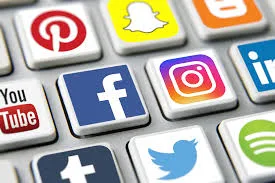In today’s interconnected era, technology, social media and digital literacy are shaping societies and individual lives in unprecedented ways.
Technology has provided the foundation for instant communication, global connectivity and advanced learning platforms, while social media has emerged as a powerful amplifier of voices and ideas.
At the same time, digital literacy ensures that individuals can responsibly and effectively engage with the tools of the digital age. These three aspects together have transformed how people think, work, interact and participate in collective growth, though they also bring challenges that require thoughtful and inclusive responses.
The opportunities they offer for progress are vast, but the risks associated with misuse cannot be overlooked. It is therefore important to recognize their roles as complementary forces that must be balanced with responsibility.
Technology has revolutionized human life by transforming communication, education, healthcare, governance and business. The ability to connect instantly across distances through video calls, messaging and digital platforms has bridged gaps that once seemed unthinkable.
Access to information and resources from anywhere in the world has opened doors for innovation, while fields such as automation and artificial intelligence are driving new waves of economic growth. Digital solutions also contribute to tackling pressing global issues like climate change and resource management.
Yet, challenges such as job displacement, over-reliance on machines and the gap between digitally equipped and underprivileged communities continue to demand careful attention. If technology is to remain a positive force, it must be applied in ways that promote inclusivity and sustainable development rather than leaving certain sections of society behind.
Alongside technology, social media has become one of the most influential tools of this age, connecting people across borders and cultures while enabling them to share ideas and experiences instantly. It has proven to be a powerful platform for advocacy, awareness and education, allowing individuals and groups to raise their voices on issues that might otherwise remain unnoticed. Businesses, professionals and educators also benefit from its networking and outreach, turning social media into an enabler of opportunity.
At the same time, it has a profound influence on shaping public opinion and consumer behavior, creating spaces where trends are born and narratives are formed. However, concerns like misinformation, cyberbullying, privacy violations and addiction highlight the need for greater responsibility and awareness while using these platforms. If utilized wisely, social media can continue to strengthen communication, knowledge-sharing and community building in positive ways.
Equally important is digital literacy, which equips individuals with the skills needed to navigate the digital world effectively and safely. It goes beyond the ability to operate devices, focusing instead on critical thinking, evaluation of information and the ability to distinguish between credible sources and misleading content. Digital literacy also fosters cyber safety by encouraging responsible online behavior and protection of personal data. In today’s job market, it enhances employability and opens pathways to entrepreneurship, giving individuals the tools to succeed in the digital economy.
Importantly, digital literacy helps reduce the divide between different sections of society by ensuring that the benefits of technology and social media are not limited to a privileged few but are accessible to all. In essence, it empowers people to participate in modern life with confidence, responsibility and awareness.
Together, technology, social media and digital literacy form the pillars of the digital age, each playing a distinct yet interdependent role in shaping human progress. While technology provides the infrastructure, social media amplifies its reach and digital literacy ensures its responsible use.
Their combined impact has transformed education, healthcare, governance and community engagement on a global scale. At the same time, society must continue to address the risks they bring, including digital exclusion, misinformation and unsafe online practices. By strengthening digital literacy and promoting equal access to technological resources, societies can harness these tools as drivers of empowerment, connection and resilience.
The path forward lies in using innovation not only to advance progress but also to build an inclusive and equitable future where these forces serve humanity in constructive and sustainable ways.


